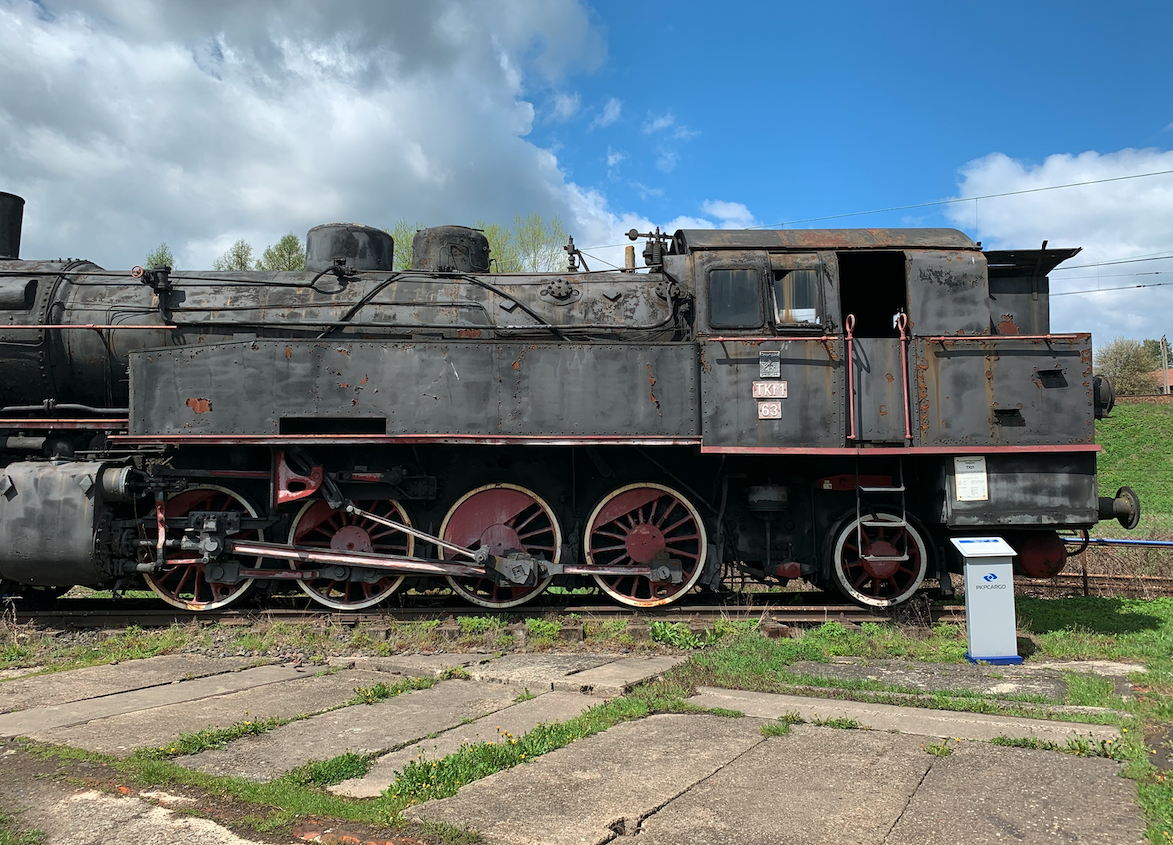Chabówka 2022-01-10
Steam locomotive TKt1-63.
The German T14 series steam locomotive was manufactured at the Aktiengesellschaft für Lokomotivbau Hohenzollern, Düsseldorf in the period 1914 - 1919, i.e. during the Great World War. Over 500 copies were built. The locomotive was designed to operate light trains on local lines in the Berlin area and on mountain routes. The advantage of the locomotive was the same forward and reverse speed and it did not require a steam locomotive turntable.
The locomotive was given the 1'D1 '(1-4-1) system, in Poland it was marked with a small letter "t". The system of four driving axles provided high tractive force and quick acceleration to the nominal running speed. Both the front and the rear were fitted with one wheel axle, which helped the locomotive fit into the curves. There are four water boxes (tanks) in the locomotive; two on the boiler sides, the third over the rear rolling axle, and the fourth over the first and second driving axle.

Contrary to the plans, the locomotives were not introduced to the Berlin junction, because it was decided to electrify it. Locomotives were sent to other routes, mainly mountain lines. Due to the outbreak of the Great War, locomotives with wagons were often sent with supplies to the front, and the wounded were taken on the way back.
After the Great War and the Second World War, Poland received a number of these locomotives. They were very worn out. Some of them were repaired and 27 were exploited. In Poland, they received the designation TKt1 in PKP. The locomotives were directed to the Kraków - Zakopane route. The locomotive pulled trains weighing up to 2,000 tons.
It turned out that the steam locomotives were not without their disadvantages. In the steam locomotive, axle loads were not distributed properly. As a result, the design speed was limited to 60 km / h, although the maximum speed was only 65 km / h. In addition, the steam locomotives turned out to be emergency.
On the Kraków - Zakopane route, the TKt1 locomotives were replaced by steam locomotives of the Polish construction OKz32.
Until now (2022), only one copy of the TKt1-63 has been preserved, which is presented in the Chabówka open-air museum.
Steam locomotive TKt1-63.
The TKt1-63 steam locomotive is on display in the Chabówka open-air museum. The steam engine is incomplete and out of service. Factory number 3496. It was produced in 1916. Previous designations KPEV Berlin 8589, and then from 1925, DRB 93 108. It was delivered to PKP in 1945. The locomotive was operated successively in DOKP Łódź, DOKP Katowice, MD Racibórz, MD Gliwice. In January 1972, the locomotive was removed from the state and put aside for many years. In 1993, the locomotive was transported to Sucha Beskidzka. In February 1994, the locomotive was taken to the Chabówka open-air museum.
T-T data of the TKt1 steam locomotive:
Axis system 1'D1 '(1-4-1). Driving wheels diameter 1.35 m. Service weight 97 600 kg, length 13.80 m. Height 4.24 m. Heating area 160 m2. Superheater heating area 50.28 m2. Grate area of 2.56 m2. Design speed 65 km / h. The smallest radius of the arch is 120 m.
Written by Karol Placha Hetman
